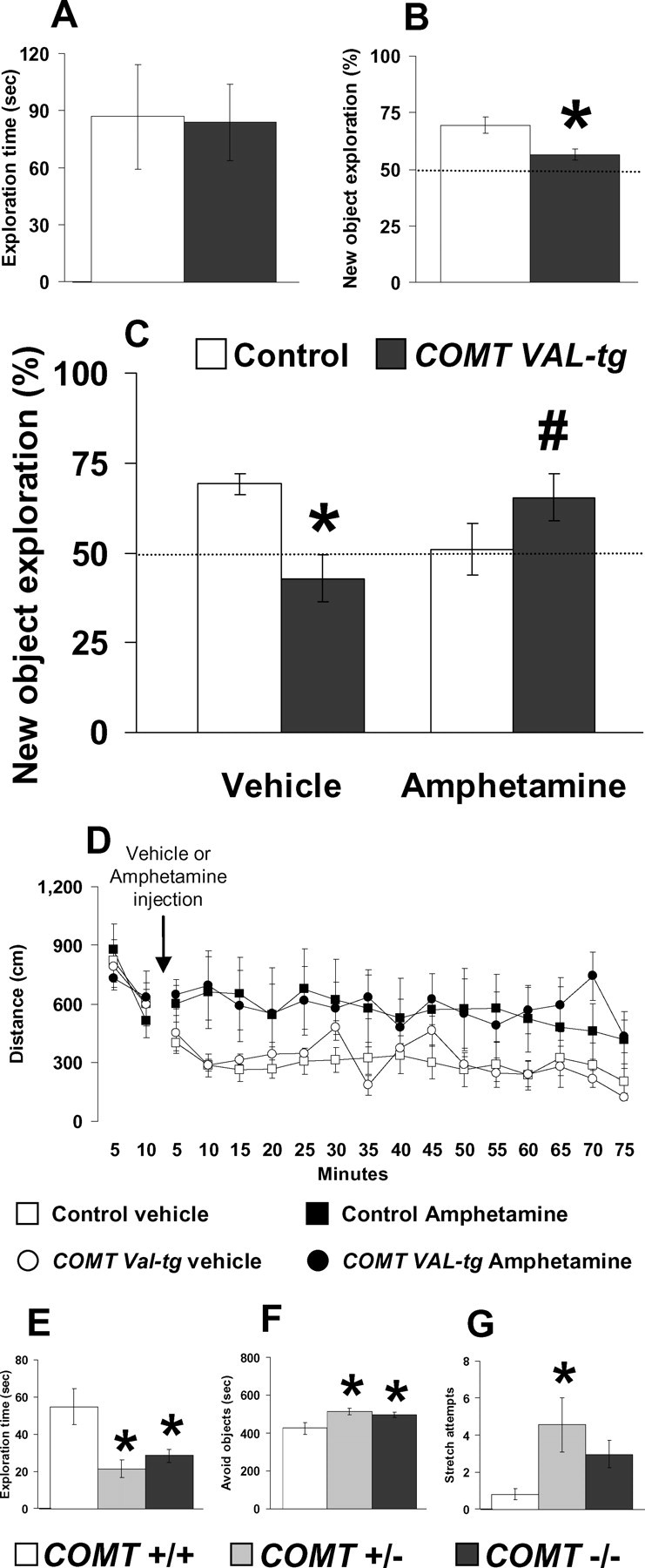Figure 3.

Impaired object recognition memory in COMT-Val-tg mice is reversed by amphetamine treatment. A, Time spent exploring two identical objects displayed by COMT-Val-tg and their control littermates during the 10 min acquisition session of the object recognition test. n = 8–11 per group. B, Percentage of the time spent exploring the new object over the total time spent in exploring both objects by COMT-Val-tg and control mice during the 5 min retention trial of the novel object recognition test, performed 1 h after the acquisition session. n = 7–11 per group. *p < 0.05 versus control mice. C, Percentage of the time spent exploring the new object over the total time spent in the exploration of the two objects during the 5 min retention trial with a 1 h delay, displayed by COMT-Val-tg and control mice treated with vehicle or amphetamine (1.5 mg/kg, i.p.) immediately after the acquisition session. The dotted lines correspond to chance levels (50%) of new object exploration. n = 7–12 per group. *p < 0.05 versus vehicle-treated control mice; # p < 0.05 versus vehicle-treated COMT-Val-tg mice. D, Ambulatory distance in 5 min bins displayed by control and COMT-Val-tg mice during the 10 min before and 1 h and 15 min after the vehicle or amphetamine (1.5 mg/kg, i.p.) injection. Note that these are the same open-field apparatus and timing used in the different phases of the novel object recognition memory test. n = 4–6 per group. E–G, Time spent exploring (E) and avoiding (F), and number of stretching attempts toward the two identical objects (G), displayed by COMT+/+, COMT+/−, and COMT−/− littermates during the 10 min acquisition session of the object recognition test. n = 5–7 per group. *p < 0.05 versus COMT+/+ mice. Values represent mean ± SEM.
